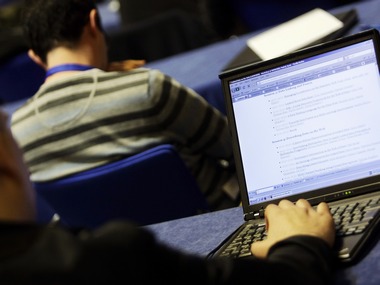In 1996, Kodak was ranked the fourth most valuable brand in the world by Interbrand. Less than 16 years later, in January 2012, it filed for Chapter 11 bankruptcy. A major reason for its fall was the inability of the company to go ‘digital’ fast enough.
Ironically it was an engineer at Kodak who invented digital photography. As Mark Johnson writes in Seizing the White Space - Business Model Innovation for Growth and Renewal, “In 1975, Kodak engineer Steve Sasson invented the first camera, which captured low-resolution black-and-white images and transferred them to a TV. Perhaps fatally, he dubbed it ‘filmless photography’ when he demonstrated the device for various leaders at the company.”
Sasson’s new product was shown to the top bosses at Kodak. He was told “that’s cute - but don’t tell anyone about it.” The reason for the reluctance of the top brass to what would become digital photography was very simple. Kodak, at that point of time, was the world’s largest producer of photo film. And any camera that did not use photo-film was obviously going to be detrimental to the interests of the company.
So ‘Kodak’ missed the digital revolution despite having invented the digital camera.
[caption id=“attachment_1024177” align=“alignright” width=“380”]  Reuters[/caption]
As marketing guru Al Ries wrote in January 2012 column, just after Kodak went bankrupt: “In 1986, Kodak announced the development of the world’s first megapixel digital sensor small enough for a handheld camera, one that had 1.4 million pixels. In 1994, Kodak introduced the first digital camera under $1,000. Between 1985 and 1994, Kodak invested some $5 billion into digital research and development. As a result of its massive investments, Kodak holds more than a thousand patents related to digital photography. Kodak recently received, in patent-suit settlements, $550 million from Samsung and more than $400 million from LG Electronics.”
Despite being a pioneer in digital photography, the focus at Kodak was always on trying to sell ‘more’ photo-films. And that finally led to bankruptcy in the end.
Impact Shorts
More ShortsThe new face of digital photography is Instagram, a company which was bought by Facebook in 2012 for a billion dollars. Computer scientist and philosopher Jaron Lanier makes a very interesting point comparing Kodak and Instagram in his new book Who Owns the Future?
As he writes “Kodak employed more than 1,40,000 people and was worth $28 billion. They even invented the digital camera. But today Kodak is bankrupt. And the new face of digital photography has become Instagram. When it was sold to Facebook for a billion dollars in 2012, Instagram employed only 13 people. Where did all those jobs disappear to? And what happened to all the wealth that those middle-class jobs created?”
So what makes Instagram so valuable? asks Lanier. “Instagram isn’t worth a billion dollars just because those 13 employees are extraordinary. Instead, its value comes from the millions of users who contribute to their network without being paid for it. Networks need a great number of people to participate in them to generate significant value. But when they do, only a small number of people get paid. That has the net effect of centralising wealth and limiting overall economic growth.”
And this is true not only for Instagram. Take the case of Google. It might be a great search engine but ultimately it’s the people (and not its employees) who are generating the content that Google helps throw up. What would Facebook be without the ’time’ that people choose to spend on it? The same stands true for Twitter as well.
It is people like you and me who make these networks so valuable. As Lanier writes, “An amazing number of people offer an amazing amount of value over networks. But the lion’s share of wealth now flows to those who aggregate and route those offerings, rather those who provide the ‘raw materials’…We want free online experiences so badly that we are happy to not be paid for information that comes from us now or never. That sensibility also implies that the more dominant information becomes in our economy, the less most of us will be worth.”
This concentration of wealth is one of the negative effects of the digital revolution. “The clamour for online attention only turns into money for a token minority of people, but there is another new, tiny class of people who always benefit. Those who keep the new ledgers, the giant computing devices that model you, spy on you, and predict your actions, turn your life activities into the greatest fortunes in history. Those are concrete fortunes made of money,” writes Lanier.
All that I have discussed till now stands true for the music industry as well. It used to be a big industry until things started to go digital. “At one time, a factory stamped out musical discs and trucks, delivered them to retail stores where salespeople sold them…There used to be a substantial middle class population supported by the recording industry, but no more. The principal beneficiaries of the digital music business are the operators of network services that mostly give away music in exchange for gathering data to improve those dossiers and software models of each person,” writes Lanier.
If all this wasn’t enough, Moore’s law is still at work leading to negative consequences. As Lanier points out, “The law states that chips get better at an accelerating rate…The technology seems to always get twice as good every two years or so…This means that after 40 years of improvements, microprocessors have become millions of times better…As information technology becomes millions of times more powerful, any particular use of it becomes correspondingly cheaper…Moore’s law means that more things can be done practically for free, if only if weren’t for those people who want to be paid. People are the flies in the Moore’s law ointment. When machines get incredibly cheap to run, people seem correspondingly expensive.”
Lanier gives the example of printing presses and newspapers. “It used to be that printing presses were expensive, so paying newspaper reporters seemed like a natural expense to fill the pages. When the news became free, that anyone would want to be paid at all started to seem unreasonable. Moore’s Law can make salaries - and social safety nets - seem like unjustifiable luxuries,” writes Lanier.
The question is: does the internet essentially destroy jobs, even those it ‘seems’ to make things more efficient.
Vivek Kaul is a writer. He tweets @kaul_vivek


)

)
)
)
)
)
)
)
)



